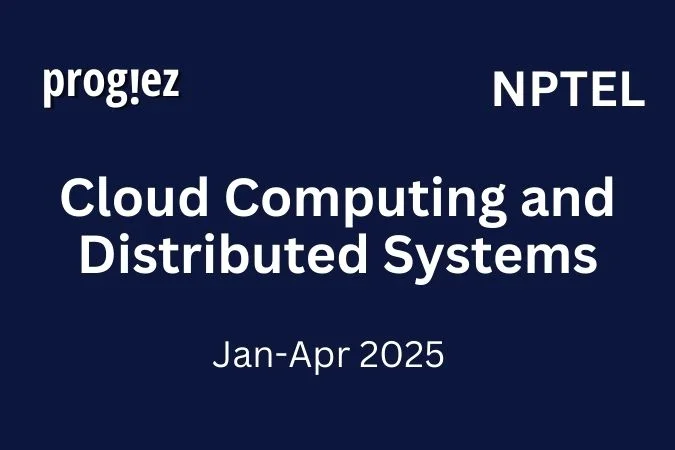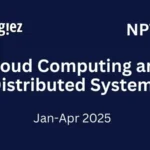Cloud Computing and Distributed Systems Week 4 Answers
Are you looking for Nptel Cloud Computing and Distributed Systems Week 4 Answers? You’ve come to the right place! Access the most accurate answers at Progiez.
Table of Contents

Cloud Computing and Distributed Systems Week 4 Answers (Jan-Apr 2025)
Course Link: Click Here
Q1. Assign Lamport timestamps to the events (a, b, c, d, e, f) as shown in the figure:
(a) 6, b: 2, c: 6, d: 7, e: 7, f: 8
(b) 1, b: 2, c: 2, d: 3, e: 4, f: 2
(c) 6, b: 7, c: 6, d: 7, e: 7, f: 8
(d) 6, b: 7, c: 6, d: 7, e: 8, f: 9
Q2. Which event is concurrent with the vector clock (2, 7, 3)?
(a) (4, 9, 4)
(b) (1, 7, 4)
(c) (1, 5, 1)
(d) (5, 7, 3)
Q3. A client gets a timestamp of 3:12:30.500 from a time server. The elapsed time between the request and response was 20 msec (0.020 sec). The current time on the client is 3:12:30.510. Using Cristian’s algorithm i.e. server time + ½(elapsed time), what is the time set on the client?
(a) 3:12:30.480
(b) 3:12:30.490
(c) 3:12:30.510
(d) 3:12:30.520
Q4. A client’s clock reads 3:20:00. The server’s clock reads 3:10:00 when they synchronize using the Berkeley algorithm. Assume message delays are negligible. What is the time at the client after synchronization?
(a) 3:20:00
(b) 3:10:00
(c) 6:30:00
(d) 3:15:00
Q5. True or False?
DTP (Datacenter Time Protocol) uses the physical layer of network devices to implement a decentralized clock synchronization protocol.
(a) True
(b) False
Q6. The properties that hold for quorums in a coterie are:
(a) Total ordered set property
(b) Intersection property
(c) Minimality property
(d) Both Intersection and Minimality property
Q7. True or False?
The Chandy-Lamport global snapshot algorithm works correctly for non-FIFO channels.
(a) True
(b) False
Q8. Find out the correct property to solve mutual exclusion in a distributed system:
Property 1: At most one process executes in a critical section at any time
Property 2: Every request for a critical section is granted eventually
Property 3: Requests are granted in the order they were made
(a) Property 1: Liveness, Property 2: Fairness, Property 3: Safety
(b) Property 1: Safety, Property 2: Fairness, Property 3: Liveness
(c) Property 1: Fairness, Property 2: Safety, Property 3: Liveness
(d) Property 1: Safety, Property 2: Liveness, Property 3: Fairness
Q9. Consider the following statements:
Statement 1: Lamport’s algorithm achieves mutual exclusion.
Statement 2: Lamport’s algorithm is fair.
(a) Only statement 1 is true
(b) Only statement 2 is true
(c) Both statements are true
(d) Both statements are false
Q10. ___________________ provides Advisory locks only and doesn’t guarantee mutual exclusion unless every client checks the lock before accessing the resource.
(a) Paxos
(b) Google’s Chubby
(c) Cassandra
(d) Microsoft Azure
Cloud Computing and Distributed Systems Week 4 Answers (Jan-Apr 2025)
For answers to others Nptel courses, please refer to this link: NPTEL Assignment
